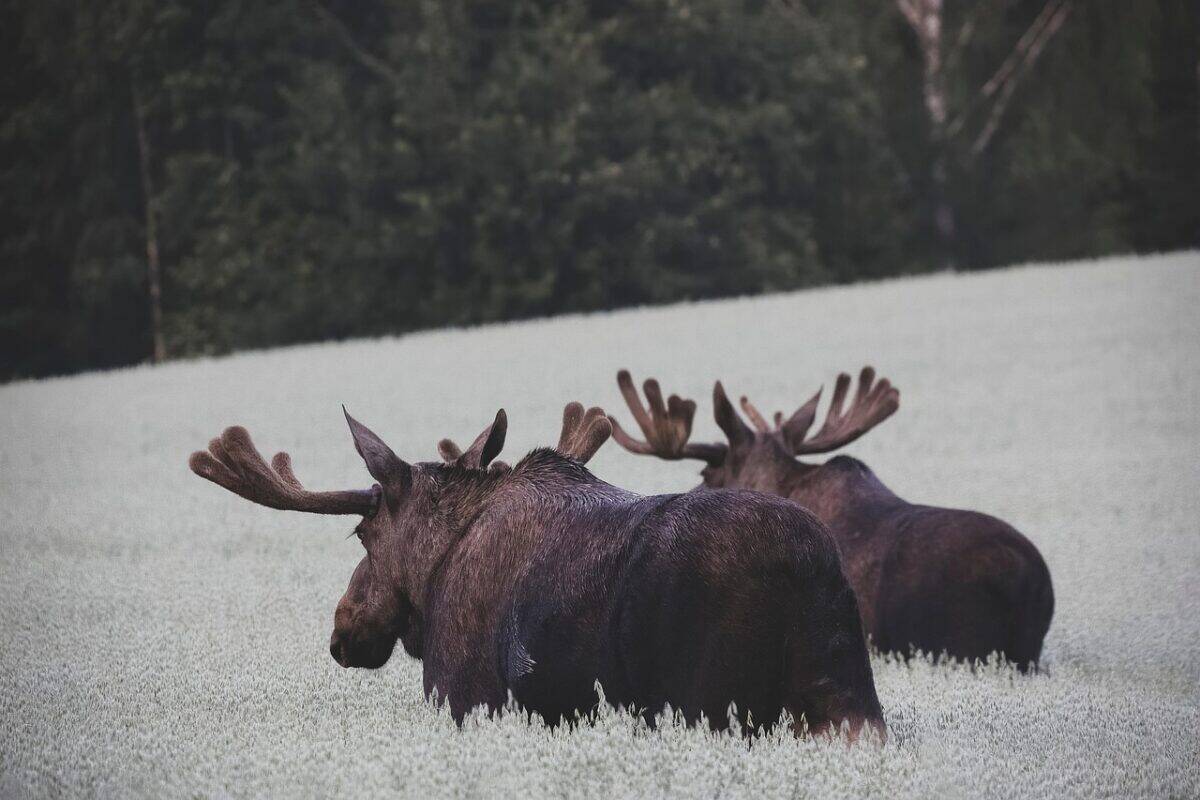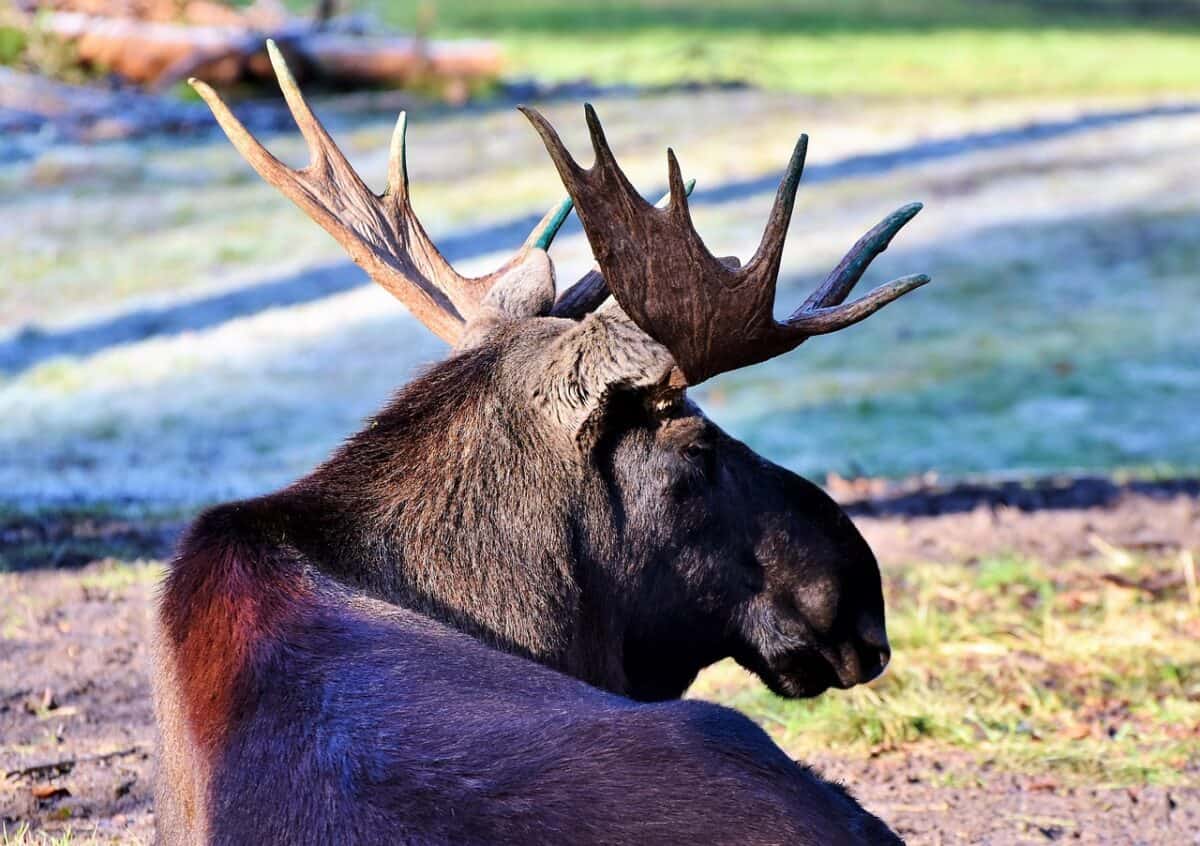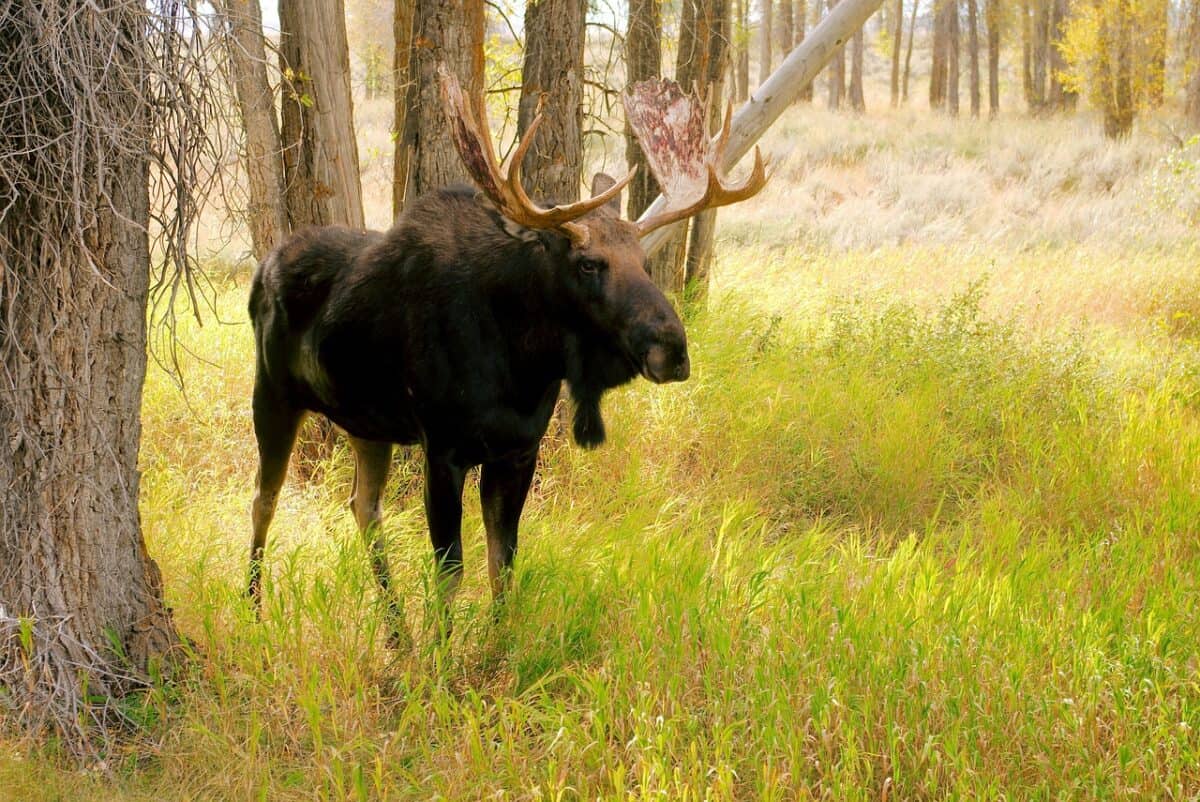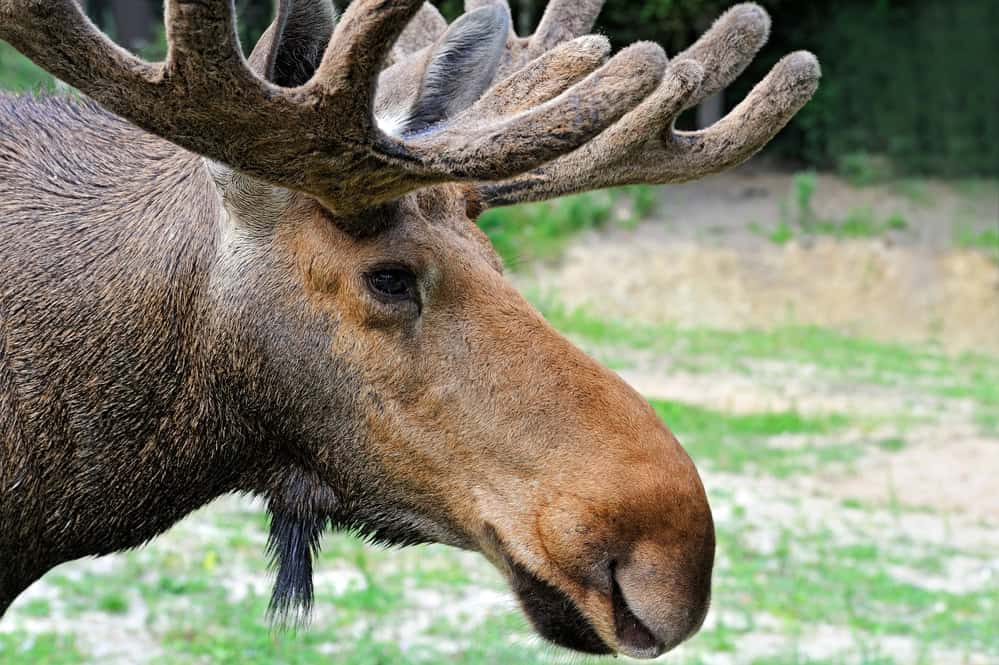Encountering wildlife can be a breathtaking experience, but when that wildlife stands over six feet tall at the shoulder and weighs up to 1,500 pounds, the encounter takes on a different dimension. Moose, the largest members of the deer family, are magnificent creatures that roam forests across North America, Europe, and Russia. While they generally prefer to avoid human contact, circumstances occasionally bring these massive mammals and humans together. Understanding what happens during these encounters—and how to navigate them safely—can mean the difference between a memorable wildlife sighting and a dangerous confrontation.
The Typical Moose Temperament

Contrary to what their imposing size might suggest, moose are generally not aggressive animals by nature. They’re herbivores, primarily browsing on vegetation rather than hunting prey. Most moose prefer to maintain their distance from humans and will typically avoid confrontation if given the opportunity. However, this doesn’t mean they’re timid or easily frightened. Moose have few natural predators as adults due to their size, and they don’t inherently fear humans the way smaller animals might. This combination of traits—massive size without innate fear—creates a potentially unpredictable situation when humans enter the picture.
Seasonal Variations in Moose Behavior

Moose behavior changes dramatically throughout the year, affecting how they might respond to human encounters. During rutting season (September to October), bull moose experience testosterone surges that make them particularly aggressive and unpredictable. They’re focused on competing for mates and may perceive humans as threats or rivals. Cow moose are most defensive during calving season (May to June) when they’re protecting their young. A mother moose with a calf is one of the most dangerous wildlife encounters possible in North America, as maternal instincts make them extremely protective and more likely to charge perceived threats. Winter months, when food is scarce and energy conservation is crucial, can also make moose irritable and less tolerant of disturbances.
Warning Signs of Moose Aggression

Moose communicate their discomfort or aggression through specific body language that humans should learn to recognize. The earliest warning signs include the moose stopping its activity and focusing intently on you, laying its ears back against its head, raising the hackles on its neck, or licking its lips. More serious warning signs include the moose lowering its head, stomping its hooves repeatedly, or making a grunting sound. If a moose begins to walk deliberately toward you, especially with its head lowered, it’s demonstrating clear aggressive intent. Unlike predators that might bluff charge, when a moose charges, it typically intends to make contact. Understanding these warning signs can provide crucial seconds to implement safety strategies.
The Reality of Moose Attacks

While rare, moose attacks can be extremely dangerous and occasionally fatal. Statistics indicate there are typically fewer than 10 serious moose attacks annually in North America, but this number is increasing as human development expands into moose habitat. Unlike bear attacks where biting is common, moose typically attack by charging and then striking with their front hooves in powerful downward motions that can exert thousands of pounds of force. A single kick can cause severe injuries including broken bones, internal damage, or head trauma. Many moose-human conflicts involve people being too close while photographing moose or unknowingly coming between a mother and calf. According to wildlife biologists, most attacks occur because humans fail to recognize early warning signs or don’t understand appropriate responses to moose behavior.
Unexpected Encounters on Roads and Trails

Many moose-human encounters occur unexpectedly on roads or hiking trails. Moose frequently use human trails as convenient travel corridors, especially in winter when deep snow makes forest travel difficult. On roads, moose collisions are surprisingly common in areas like Alaska, Maine, and the northern Rocky Mountain states, with thousands occurring annually. These collisions are particularly dangerous because the moose’s tall body structure means a vehicle typically hits the legs, sending the heavy body crashing through the windshield. On trails, hikers may round a bend to find themselves face-to-face with a moose at close range. These surprise encounters are particularly dangerous because neither party has time to avoid the interaction, and the moose may feel cornered. Wildlife officials recommend making noise while hiking in moose country to reduce surprise encounters.
Urban and Suburban Moose Interactions

As human development expands into wildlife habitats, moose are increasingly found in suburban and even urban environments. Cities like Anchorage, Alaska regularly have moose wandering through neighborhoods, parks, and even downtown areas. These urban moose may become somewhat habituated to human presence but remain wild and unpredictable. They’re often attracted to gardens, ornamental trees, and shrubs which offer easy browsing opportunities. Urban encounters create unique risks because residents may not expect to see massive wildlife near their homes, and moose have fewer escape routes in developed areas. Children waiting at bus stops or people walking dogs are particularly vulnerable to unexpected moose encounters. Local wildlife authorities in moose-inhabited regions typically have established protocols for managing urban moose and educating residents about safety.
How to React During a Moose Encounter

If you encounter a moose, wildlife experts recommend specific strategies to maximize safety. First, maintain a distance of at least 50 feet—more if possible. If the moose notices you, speak in a calm, normal voice to let it know you’re human. Never approach a moose, even if it appears calm, and especially avoid getting between a cow and her calf. If the moose shows signs of agitation or aggression, back away slowly while continuing to face the animal. Never run—this can trigger a chase response. If a moose charges, your best option is to run and try to place a substantial object between you and the moose—a car, large tree, or building can provide critical protection. Unlike with bears, playing dead is not effective with an agitated moose. If you’re knocked down, curl into a ball and protect your head with your arms, as most injuries occur from trampling.
The Impact of Dogs on Moose Encounters

Dogs significantly increase the risk factor in moose encounters. Moose often perceive dogs as predators similar to wolves, their natural enemies. Even a small dog can provoke an aggressive defensive response from a moose. Numerous documented attacks have occurred when off-leash dogs have discovered moose and either barked at them or chased them, then retreated to their owners—effectively leading an angry moose directly to humans. If hiking or living in moose country, keeping dogs leashed is essential for both the dog’s safety and your own. If an unleashed dog provokes a moose, experts recommend not calling the dog to you, as this may bring the agitated moose in your direction. Instead, move behind solid cover and allow your dog to find its own escape route.
Moose Habituation to Humans

As moose adapt to living near human settlements, some individuals become habituated—meaning they show reduced fear responses to human presence. While this might seem positive, wildlife biologists consider habituated moose particularly dangerous. These moose are more likely to allow humans to approach closely before reacting, creating a false sense of security. When their tolerance threshold is crossed, habituated moose may respond with little warning. Additionally, habituated moose may actively seek out human areas for food, especially in winter when resources are scarce. Wildlife management agencies actively work to prevent habituation by educating the public about not feeding moose and properly securing attractants like gardens and compost. In some areas, harassment techniques like air horns or rubber projectiles are used to reinstill fear of humans in overly comfortable moose.
Photographing Moose Safely

Many moose-human conflicts occur during wildlife photography attempts. The desire to capture these majestic animals on camera often leads people to approach too closely or behave inappropriately. Wildlife photographers should follow specific guidelines when photographing moose: use telephoto lenses that allow photography from safe distances, never approach closer than 50 yards, always maintain awareness of escape routes, avoid positioning between cows and calves, and be especially cautious during rutting and calving seasons. Professional wildlife photographers recommend using vehicles as blinds when possible, as moose generally perceive vehicles differently than people on foot. Most importantly, photographers should recognize that no photograph is worth risking personal safety or causing stress to wildlife. The National Park Service has documented numerous cases of photographers being injured by moose after approaching too closely for “just one more shot.”
Legal Protections and Management

Moose are protected wildlife in all states and provinces where they occur, with specific regulations governing human interactions. Intentionally harassing moose is illegal and can result in significant fines. In many jurisdictions, even feeding moose is prohibited due to the dangers of habituation. Wildlife management agencies have developed protocols for addressing problem moose, typically using a graduated response system. Initial responses involve attempting to haze or relocate troublesome individuals, while euthanasia is considered a last resort for animals that pose significant public safety risks. According to management statistics, the frequency of moose-human conflicts has increased in many regions over the past two decades, believed to be related to habitat encroachment, climate change altering moose ranges, and growing human recreational use of wilderness areas.
Cultural and Regional Variations

Human relationships with moose vary significantly across different cultures and regions. Indigenous peoples of North America have coexisted with moose for thousands of years, developing traditional knowledge about moose behavior and respectful interactions. In Scandinavian countries like Sweden and Norway, where European moose (known as elk) are common, there are different cultural approaches to moose management and human interactions. In Alaska, moose are so integrated into daily life that schools have “moose protocols” for children during recess, and residents commonly adjust their routines around seasonal moose activity. Tourist destinations in moose country often provide specific education about moose safety, though the effectiveness of these programs varies. Understanding these regional and cultural variations provides insight into how different communities have adapted to share space with these massive mammals.
Conclusion

Moose encounters represent a complex intersection of wildlife behavior, human activity, and shared habitat that requires knowledge and respect to navigate safely. While moose generally prefer to avoid human interaction, their size, temperament, and increasing habitat overlap with humans create situations where understanding appropriate behavior becomes crucial for safety. By recognizing warning signs, maintaining appropriate distances, and responding correctly if confrontations occur, humans can minimize the risks associated with moose encounters. The responsibility for safe coexistence falls primarily on humans, as we have the capacity to learn and adapt our behaviors in ways that respect the needs and natural behaviors of these magnificent animals. As we continue to share landscapes with moose, education and awareness remain our most powerful tools for ensuring that encounters between humans and these impressive mammals remain peaceful and positive experiences for both species.
- How Lemurs Are Holding On in Madagascar - August 24, 2025
- The Secret to How Camels Survive 100°F Heat Without Sweating - August 24, 2025
- The Hidden Dangers of Wildlife Tourism—Are You Accidentally Harming Animals? - August 24, 2025

